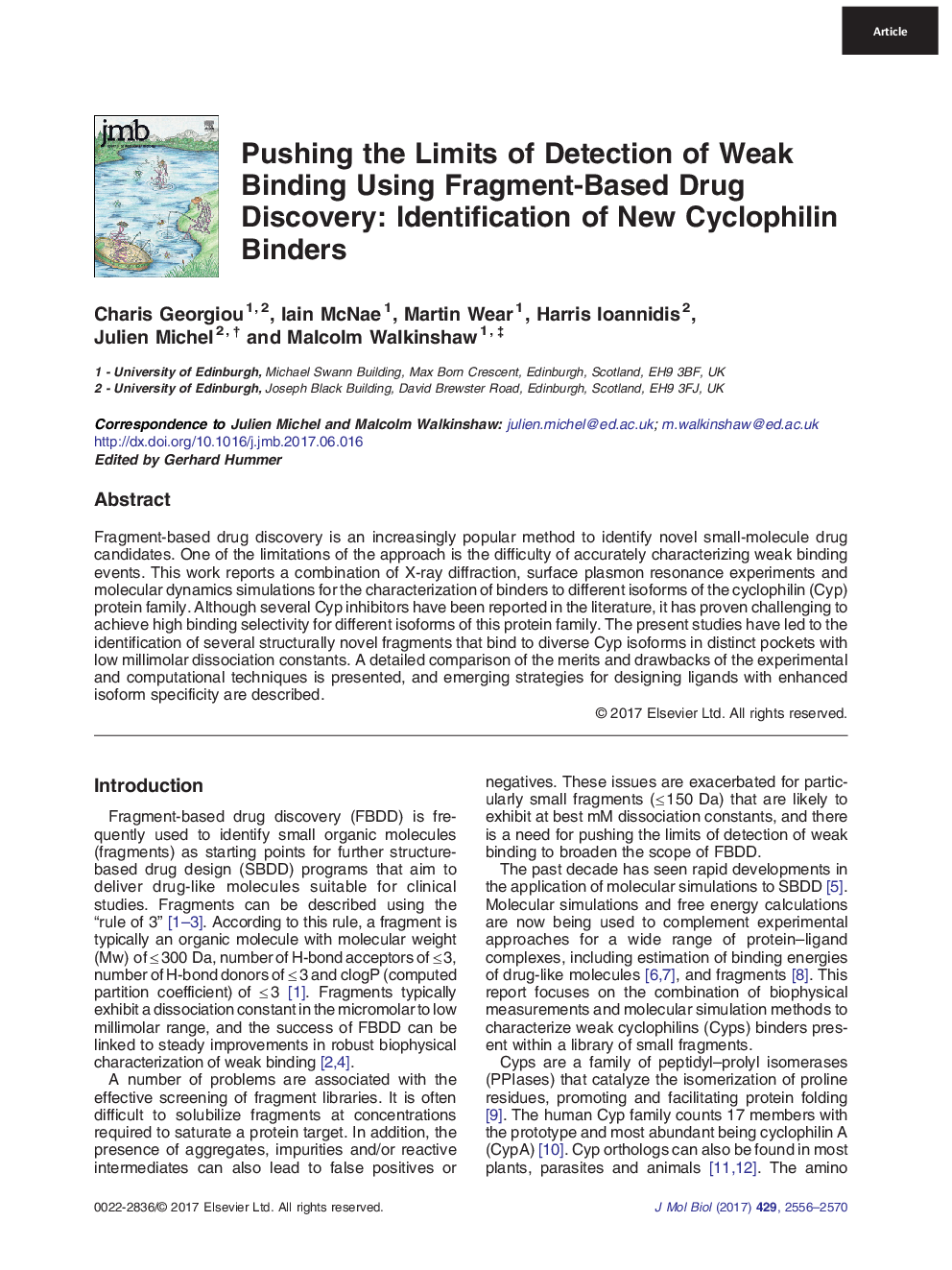| Article ID | Journal | Published Year | Pages | File Type |
|---|---|---|---|---|
| 5532960 | Journal of Molecular Biology | 2017 | 15 Pages |
â¢FBDD is a popular method, but weak binding is difficult to detect.â¢There is a need for pushing the limits of weak binding detection.â¢A combination of X-ray, SPR and MD methodologies increases successful characterization of weak binding events.â¢Several novel Cyp fragment binders were identified.
Fragment-based drug discovery is an increasingly popular method to identify novel small-molecule drug candidates. One of the limitations of the approach is the difficulty of accurately characterizing weak binding events. This work reports a combination of X-ray diffraction, surface plasmon resonance experiments and molecular dynamics simulations for the characterization of binders to different isoforms of the cyclophilin (Cyp) protein family. Although several Cyp inhibitors have been reported in the literature, it has proven challenging to achieve high binding selectivity for different isoforms of this protein family. The present studies have led to the identification of several structurally novel fragments that bind to diverse Cyp isoforms in distinct pockets with low millimolar dissociation constants. A detailed comparison of the merits and drawbacks of the experimental and computational techniques is presented, and emerging strategies for designing ligands with enhanced isoform specificity are described.
Graphical AbstractDownload high-res image (82KB)Download full-size image
